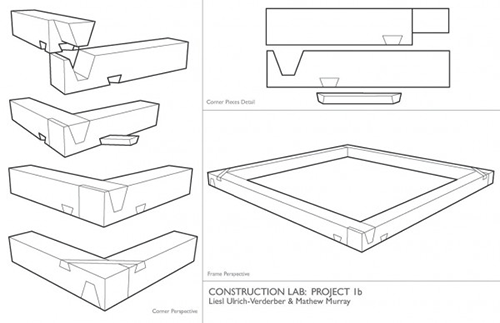Harvard Magazine: Architecture as Liberal Art
By Stephanie Garlock, Harvard Magazine

Image courtesy of Liesl Ulrich-Verderber
AT THE START of their undergraduate architecture lab this fall, Mark Mulligan and Michael Smith gave their students an assignment that seemed like something out of a high-school shop class: take two pieces of wood, and make a joint. But before the students sat down to plan their projects, Mulligan and Smith had lectured on subjects ranging from the physical properties of the material to the cultural legacy of Japanese wood joinery, revealing the depth that even such a modest project could contain. By the end of the week, students had moved to the woodshop in the basement of Gund Hall to build the plans they’d sketched, fulfilling for the first time the hands-on component promised in the course’s title—HAA179x: “Construction Lab.” Soon, the principles of design and history they had learned earlier met with a very different understanding of what’s possible in a world with gravity and human error. “They draw and think up these things” that can be quite intricate, says Smith, a lecturer in architecture. “But then they’re presented with the material, and the whole world changes.”
These three streams—history and theory, design imagination, and the physical act of making—are the central components of the undergraduate track in architecture studies, a joint program from the Graduate School of Design (GSD) and the Faculty of Arts and Sciences’ (FAS) department of history of art and architecture. It took years of planning on both sides—including “literally two years of meetings”—to get the program off the ground in the fall of 2012, explains Noyes professor of architectural theory K. Michael Hays, the GSD’s associate dean for academic affairs. The first students in the track, housed within the art-history concentration, graduated last spring.
Read the entire article on Harvard Magazine.
